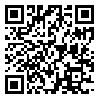Volume 9, Issue 2 (Journal OF Welding Science and Technology 2024)
JWSTI 2024, 9(2): 143-153 |
Back to browse issues page
Download citation:
BibTeX | RIS | EndNote | Medlars | ProCite | Reference Manager | RefWorks
Send citation to:



BibTeX | RIS | EndNote | Medlars | ProCite | Reference Manager | RefWorks
Send citation to:
Sadraee Far M N, Kolahan F. Investigation of weld bead geometry and microstructures of 316L stainless steel in Activating flux TIG Welding using ultrasonic vibrations. JWSTI 2024; 9 (2) :143-153
URL: http://jwsti.iut.ac.ir/article-1-449-en.html
URL: http://jwsti.iut.ac.ir/article-1-449-en.html
1- Ferdowsi University of Mashhad, Department of Mechanical Engineering, Mashhad, Iran
2- Ferdowsi University of Mashhad, Department of Mechanical Engineering, Mashhad, Iran ,kolahan@um.ac.ir
2- Ferdowsi University of Mashhad, Department of Mechanical Engineering, Mashhad, Iran ,
Abstract: (6806 Views)
In this study, we employed the active TIG method with ultrasonic vibration (UV) for welding 316L steel. Throughout the active tungsten inert gas (A-TIG) welding process, a high-frequency ultrasonic generator produced high-intensity acoustic waves at an optimal frequency of 20.3 kHz and a vibration amplitude of 8 micrometers. These waves were directed into the molten weld pool, covered by SiO2 nanoparticles serving as an activating flux. The effect of UV and nanoparticles on weld geometry and weld microstructure was analyzed and compared with conventional TIG welding proces. The results indicated that the use of nanopowder not only increased weld penetration by approximately 17.5% but also reduced the Weld Bead Width (WBW) by 28% compared to Conventional TIG. These values increased by 25% and decreased by 35%, respectively, in the presence of ultrasonic waves. Additionally, the introduction of nanomaterials into the molten pool led to finer grains. The ultrasonic waves played a crucial role in ensuring the uniform distribution of these nanomaterials in the melt, ultimately resulting in an enhanced microstructure of the weld.
Keywords: ctivating flux tungsten inert gas welding (A-TIG), ultrasonic vibrations, Nanoparticles, 316L stainless steel, microstructure refinement.
Type of Study: Applicable |
Subject:
Special
Send email to the article author
| Rights and permissions | |
 |
This work is licensed under a Creative Commons Attribution-NonCommercial 4.0 International License. |







